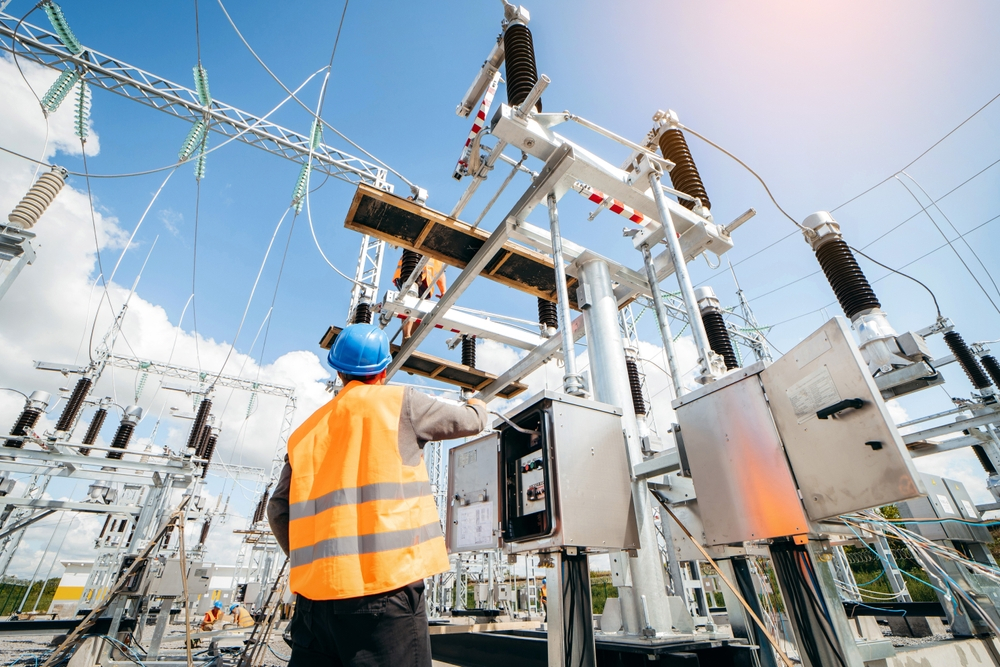
Automatic Power Factor Correction (APFC) is a technology used in electrical engineering to manage and improve the power factor of an electrical load. The power factor measures how efficiently electrical power is used in a system. It is the ratio of real power (in watts) to apparent power (in volt-amperes), and it indicates how effectively the current is being converted into useful work.
In this blog, we explore APFC and highlight its significance in electrical engineering.

The Significance of Automatic Power Factor Correction
APFC holds tremendous importance in electrical engineering for several reasons:
Energy Efficiency: APFC systems improve the power factor, meaning less reactive power needs to be generated and transmitted. This reduces energy losses in power distribution systems and more efficient electrical power utilisation.
Reduced Energy Costs: Many utility companies charge industrial and commercial consumers based on their power factor. A poor power factor results in higher electricity bills due to low power factor consumption penalties. APFC systems can help avoid these penalties by maintaining a high power factor.
Optimal Resource Utilisation: APFC systems allow electrical systems to operate efficiently. By reducing the need for reactive power generation, utilities can allocate their resources more effectively, leading to cost savings and better grid management.
Improved Voltage Regulation: Power factor correction can improve voltage regulation in distribution systems. Voltage drops caused by reactive power consumption are minimised, ensuring that connected equipment operates within specified voltage limits.
Extended Equipment Life: Inductive loads with poor power factor draw excess current from the supply, causing additional stress on electrical equipment like motors, transformers, and cables. By improving the power factor, these loads can operate with reduced current, potentially extending the lifespan of equipment.
Capacity Release: Power factor correction can free up capacity in distribution systems. Improved power factor reduces the current flowing through the system, allowing more loads to be connected without overloading the infrastructure.
Environmental Impact: APFC systems contribute to environmental sustainability by reducing energy losses and decreasing the need for excessive power generation. This can lead to lower greenhouse gas emissions associated with electricity production.
Compliance with Regulations: Many countries have regulations or standards requiring certain industrial facilities to maintain a specified power factor. APFC systems help industries meet these requirements and avoid legal consequences.
Reliability and Stability: By maintaining a balanced power factor, APFC systems contribute to electrical grids’ overall stability and reliability. Uncontrolled reactive power can lead to voltage fluctuations and instability.
In essence, automatic power factor correction is a critical aspect of modern electrical engineering that contributes to energy efficiency, cost savings, improved equipment performance, and overall power distribution and consumption sustainability.

OmDayal Group of Institutions: Redefining Global Education Standards
Elevating education since its inception in 2010, the OmDayal Group of Institutions has been a torchbearer for aspiring architects and engineers. The institution stands as a testament to excellence, offering a spectrum of engineering and architectural courses endorsed by MAKAUT (Maulana Abul Kalam Azad University of Technology). Having NAAC accreditation, along with the stamp of approval from AICTE and COA for its Architecture and Engineering programs, this institution paves the way for knowledge-seekers.
At the forefront of electrical engineering advancements, our students are orchestrating remarkable feats. Notably, their project on “Auto Power Factor Correction” is emerging as a standout initiative, garnering substantial attention.
For more information, visit https://omdayal.com.

References:





